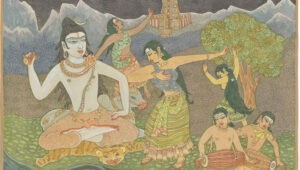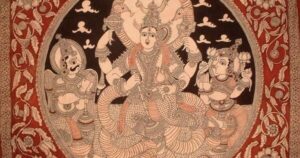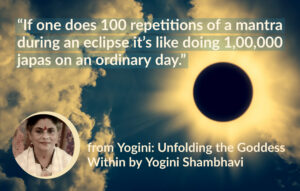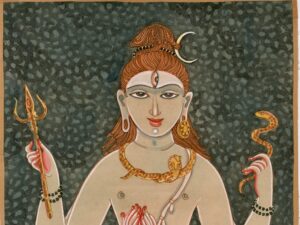In India this cosmic feminine force has been granted her widest expression – in every aspect of the feminine human life from child and daughter, to wife, mother and grandmother, and throughout nature as the rivers, lakes, valleys, moon and flowers. She is called Devi, the Universal Shakti, or the Goddess and Hindu temples abound with her many forms, depictions and dances. One of her key forms is Saraswati who brings wisdom, beauty and grace to everyone who honours Her.
Saraswati from Vedic times
Saraswati represents Vak or the divine word in all her forms. Her reflection extends to all Hindu Devis as arising from Chit-shakti, the power of consciousness.
Saraswati is the most lauded goddess of the Vedas as Veda Mata, the mother of Vedic knowledge and all the Vedic deities. Saraswati was also the name of the vast river in northwest India on which the ancient Vedic people cultivated the inner divine light through fire rituals and deep meditation. The Vedic Rishis worked through her inspiration in cognizing the Vedas through the Cosmic Mind.
Saraswati plays the veena, the symbol of divine music, holding the book of inner knowledge and the mala as the power of mantra. She has a charming human form, diversely portrayed in painting and sculpture throughout the centuries. She rides the swan of elegant movement, or the peacock that reveals an unbounded creativity arising from a unitary inner vision.
Saraswati means “she who abounds in wide currents and lakes”. She represents the lake of the still and peaceful mind, on which the lotuses of the chakras open. Sarasvati is Rasavati or the one who holds the rasa, the inner essence of delight. She directs to look behind the outer forms of the world to the inner message of bliss or ananda.
In the Upanishads, the entire universe arises from, abides in and returns to ananda. The image of Saraswati reminds us that the pursuit of ananda is the highest form of culture and the real purpose of our embodied existence. But it is an inner search for the the ultimate beauty and truth, which are one within us.
Saraswati Puja and Basant Panchami
Saraswati is honoured on the special date of Basant Panchami, a celebration of the beauty of springtime. The fifth day of the waxing moon proclaims the growing light of life. Hers is a festival of learning, not as mere memorization but as an irrepressible overflowing of the joy of awareness.
Worshiping Saraswati may be as simple as honouring one’s school books and educational tools, or children taking Saraswati dolls to school, such as occurs most often in the east of India. These innocent forms of worship elevate the mind and heart, quite unlike the commercial toys of modern culture.
Saraswati Puja includes formal rituals and temple worship on a larger scale as well. It is an honouring of inner calm and wisdom, encouraging us to be sensitive, compassionate and attuned to the whole of life.
In India, there has never been the sharp division of the sacred and the profane such as occurred in the West that has kept the spiritual and artistic realms apart. Saraswati Devi represents this unity.
Saraswati holds together the pure white light of spiritual knowledge and all the rainbow colours of artistic expression. She represents the dance of nature as reflecting the effulgence of the cosmic Mind. The inability to see the cosmic light through an artistic image shows a limited perception. Everything that we see and every form in nature is a symbolic expression of the our inmost Self. We should welcome and celebrate the full inner flow of grace, through the inspiration of Saraswati Devi!
Vamadeva (David Frawley)








